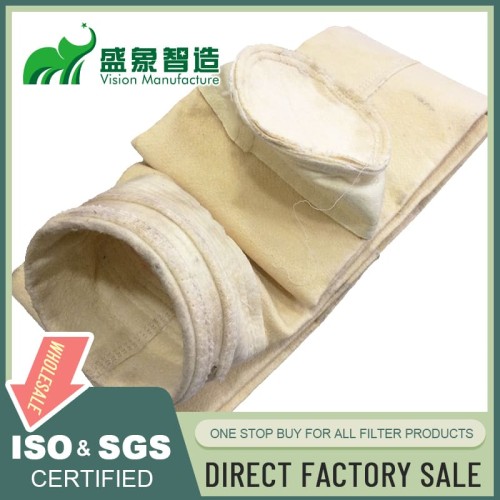
Cement Silo Dust Collectors Enhance Air Quality and Material Conservation
I. Introduction
In the cement industry, controlling dust emissions is not only crucial for environmental compliance but also for enhancing worker safety and operational efficiency. This section introduces the role of dust collectors in cement silos, emphasizing their importance in maintaining clean air and conserving materials.
II. Types of Cement Silo Dust Collectors
Cement silos utilize various dust collector systems to manage and minimize dust emissions:
- Baghouse Filters: Commonly used for their efficiency in capturing fine dust particles.
- Cartridge Collectors: Suitable for spaces where a compact solution is needed.
- Reverse Air Systems: Employ a reverse airflow to clean the filters, suitable for heavy dust loads.
- Pulse Jet Collectors: Use bursts of air to clean the dust from filters, offering continuous operation without shutdown.
III. Key Components
The effectiveness of a dust collector system depends on its components:
- Filter Media (Bags or Cartridges): The primary element that captures dust particles.
- Cleaning Mechanisms: Systems like pulse-jet or reverse air that ensure the longevity and efficiency of filter media.
- Hopper and Discharge Systems: Collect and remove dust from the collector to prevent re-entrainment.
- Fan and Ductwork: Essential for creating airflow through the collector and capturing dust.
IV. Design Considerations
Designing an effective dust collector system involves several factors:
- Silo Size and Capacity: Determines the required size and capacity of the dust collector.
- Dust Characteristics: The nature of the dust affects the choice of filter media and cleaning mechanisms.
- Airflow Requirements: Necessary to calculate the fan size and system configuration.
- Environmental Conditions: External conditions that may influence the system’s design and material selection.
V. Operational Principles
Understanding the operational principles behind dust collection is key to optimizing performance:
- Dust Capture Mechanisms: How dust is entrained within the airflow and captured by filters.
- Filtration Process: The stages of filtering and trapping dust particles.
- Cleaning Cycles: Regular intervals at which cleaning mechanisms activate to maintain filter efficiency.
- Material Reclamation: Techniques used to recover materials from collected dust, enhancing sustainability.
VI. Performance Factors
Several performance metrics are crucial for evaluating dust collector systems:
- Filtration Efficiency: The percentage of dust removed from the air.
- Pressure Drop Management: Minimizing resistance to airflow to maintain energy efficiency.
- Energy Consumption: The amount of energy required to operate the system.
- Dust Emission Rates: Ensuring emissions are within regulatory limits.
VII. Installation Process
Proper installation is crucial for the dust collector’s effectiveness:
- Site Preparation: Ensuring the site is ready for equipment installation.
- Equipment Mounting: Secure installation of the dust collector components.
- Ductwork Installation: Properly connecting ductwork for optimal airflow.
- Control System Integration: Implementing controls for automated operation and monitoring.
VIII. Maintenance and Monitoring
Regular maintenance ensures the longevity and efficiency of dust collectors:
- Regular Inspection Routines: Scheduled checks to identify any potential issues.
- Filter Replacement Procedures: Guidelines on when and how to replace filters.
- Cleaning System Maintenance: Keeping cleaning mechanisms operational.
- Performance Monitoring Techniques: Tools and methods to continuously assess system performance.
IX. Regulatory Compliance
Dust collectors in cement silos must comply with various environmental and safety regulations:
- EPA Emissions Standards: Adherence to federal environmental guidelines.
- OSHA Workplace Safety Regulations: Ensuring worker safety in handling and operations.
- Local Air Quality Requirements: Compliance with local regulations regarding air quality.
- Industry-specific Guidelines: Standards specific to the cement industry.
X. Cost Considerations
Evaluating the cost-effectiveness of dust collectors involves:
- Initial Investment Analysis: Upfront costs of system installation.
- Operational Costs: Ongoing expenses related to energy use and maintenance.
- Maintenance Expenses: Costs associated with regular upkeep and part replacement.
- ROI and Payback Period: Assessing the financial return on investment over time.
XI. Environmental Benefits
Dust collectors contribute significantly to environmental sustainability:
- Reduced Airborne Particulate Emissions: Lowering pollutants released into the atmosphere.
- Material Conservation Through Reclamation: Recycling materials from captured dust.
- Energy Efficiency Improvements: Reducing energy consumption through efficient design.
- Sustainable Cement Production Practices: Enhancing overall sustainability in cement production.
XII. Case Studies
Illustrative examples from various cement plants demonstrate the benefits of implementing advanced dust collector systems, highlighting improvements in air quality, efficiency in material handling, and compliance with environmental standards.
XIII. Technological Advancements
The future of dust collection in cement silos looks promising with:
- Smart Monitoring Systems: Enhancing real-time control and performance monitoring.
- Self-cleaning Filter Technologies: Reducing maintenance demands.
- Integration with Building Management Systems: Streamlining operations across facilities.
- Advanced Materials for Improved Performance: Utilizing cutting-edge materials to enhance filter efficiency and durability.
XIV. Conclusion
Dust collectors are indispensable in the cement industry, significantly improving air quality and material conservation. With ongoing advancements in technology and a strong emphasis on environmental compliance, these systems are set to become even more integral to industrial operations. Embracing these innovations is crucial for any facility looking to enhance its operational efficiency and environmental footprint.
Leave a comment

